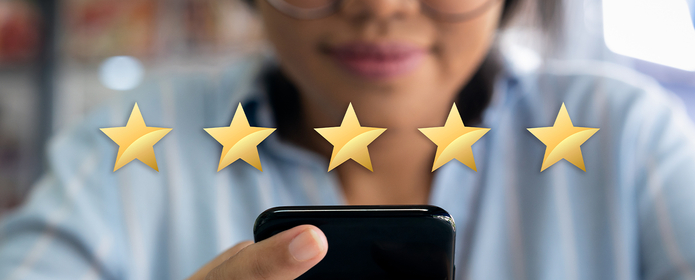FEATURED ARTICLE
2020: The Ultimate "Stress Test" For Brands
Robert Passikoff
Customer brand loyalty survived the impact of the COVID-19 pandemic. Brand Keys 25th annual 2021 Customer Loyalty Engagement Index® (CLEI) states the pandemic imposed a severe stress test on brands. This national survey included 75,804 consumers, 16 to 65 years of age from the nine US Census Regions, who self-selected categories they are consumers in and brands they are customers to.
2020 marketplace rigors created two main loyalty challenges for brands:
1. How to enhance brand-to-consumer emotional engagement (the result of effective marketing that increases a brand’s equity, resulting in customers behaving more positively toward the brand).
2. How to leverage brand values to best meet customers’ expectations (a key dimension of customers’ brand belief-systems, that are unconstrained customer desires, which increase on average 22% a year. Brands typically manage to achieve only a 7% increase, leaving a disparate gap between customer desires and brand promises.
This year, to graphically illustrate brand loyalty rankings, Brand Keys created a series of emotional engagement/expectation quadrant maps to delineate brand loyalty positions in the marketplace based on the two stress-test dynamics. Each quadrant on the map represents a combination of values related to predictive loyalty drivers: Emotional Engagement and Meeting Customer Expectations.
Ideally, brands want consumers to feel high emotional engagement with the brand in a way that meets their expectations. Brands able to do that are six times more likely to create loyal customers.
Challenges to customer loyalty in the retail sector accelerated at an overwhelming speed in the wake of the coronavirus and economic crisis. First, retailers closed. Then they re-opened. Then they had to adapt operations to comply with health-and-safety regulations, while all the time meeting increased customer expectations. These included mask wearing, controlling the number of employees and customers in stores, and then controlling physical distancing, addressing the problems of contactless transactions and, introducing self-service options. Some retailers needed to learn how to deliver better e-commerce experiences. Retailers that were first to recognize—and meet—these pandemically-fueled expectations secured customer loyalty.
The pandemic had a significant impact on the nation’s restaurant industry. From neighborhood diners to national chains, more than 100,000 restaurants and bars have permanently closed, according to estimates from the National Restaurant Association. The pandemic altered consumer behavior, from how people order restaurant food, where they can eat and their perception of third-party delivery companies. Loyalty is more critical than ever in this sector.
When the pandemic hit, airlines and hotels’ first thoughts were to rebook and re-schedule. That strategy really didn’t meet customer expectations: uncertainty was literally in the air. After a while, smart carriers and hospitality providers caught on. Airlines gave full refunds or allowed for bookings two or three years out. Both sectors upgraded technology to reduce face-to-face contact. Hotels and airlines upgraded cleaning regimens significantly. Those that engaged customers and met their ever-increasing expectations saw loyalty grow.
The pandemic coupled with general unrest around the world sparked huge growth in cable news and TV viewership. Major news providers all grew audiences significantly: up a collective 46% year over year.
It’s estimated that consumers, unable to leave their homes, spent an average of seven hours a day in front of a screen of one sort or another. Tired of the news, people watched streaming services, such as Netflix, Amazon Prime and Disney+. Then they joined new services they hadn't used previously. Eventually, the binging got old. If you didn’t want to lose eyeballs and revenue, loyalty mattered more than ever.
In sports, viewership has been disappointing. All of the major league organizations suffered viewership declines last year, as rescheduled seasons got squeezed into the second half of 2020. The most obvious explanation for the viewership drops? Simply too much sport happening at once. The suspension of virtually everything from mid-March left leagues and events scrambling to broadcast within the same window of time, putting major league sports and premier events in the situation of competing with one another for eyeballs. That’s when fan loyalty kicked in.
Finally, throughout the coronavirus pandemic, liquor stores were the one type of business that seemed to have seen an increase in activity, although they, too, had to face the same obstacles as brick-and-mortar retailers. For alcoholic beverages, customer loyalty to brands was preeminent during the pandemic.
Desperate times call for desperate choices, due to lack of product availability, and purchase of “new” or “alternative” brands represents basic need, not a lack of customer loyalty. During pandemics consumers will compromise, but they still continue to demand that their expectations be met. But lack of product availability does not denote a decline of brand loyalty. Being in-stock matters as regards sales, but loyal customers are more likely to stick with their favorite brands through difficult times and, in a more stable marketplace, will wait for them or will actively seek them out. The 2021 Customer Loyalty Engagement Index confirms brands that best meet consumers’ expectations, and are capable of sustaining emotionally engaging relationships, always see enhanced loyalty.
A complete list of the CLEI’s 94 categories, and the brands exhibiting the highest loyalty focus can be found here.
Robert Passikoff, Brand Key’s founder/president, is a thought leader who has pioneered work in loyalty and emotional brand engagement, creating the Customer Loyalty Engagement Index, the Loyalty Leaders List, and the Sports Fan and Fashion Brand Indices.
His first book, Predicting Market Success, provided a 21st century paradigm for loyalty. His second book, The Certainty Principle, dealt with engagement in a more complex and digital marketplace. His next book, Loyalty Ain’t What It Used To Be will be released Spring 2021.
Robert’s impassioned, straight-shooting and profitability-correlated perspectives are reflected by the fact that New York University’s communication school declared Dr. Passikoff “the most-quoted brand consultant in the United States.” He is the recipient of an Ogilvy Gold, an ANA Beacon Award, and has been honored twice by The Advertising Research Foundation with their Research Innovator award.


BE THE FIRST TO COMMENT